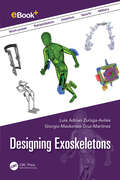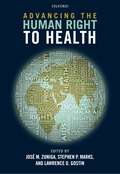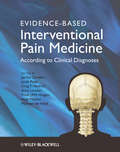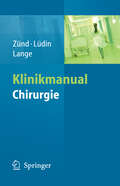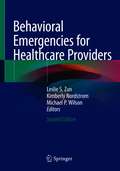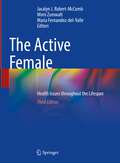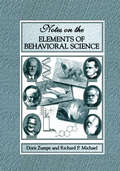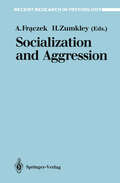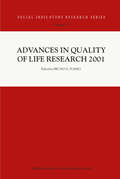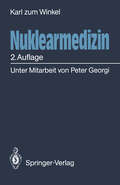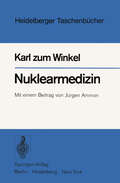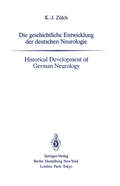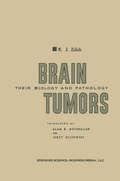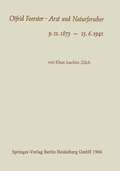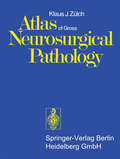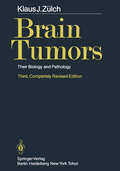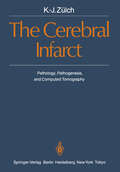- Table View
- List View
Designing Exoskeletons
by Luis Adrian Zuñiga-Aviles Giorgio Mackenzie Cruz-MartinezDesigning Exoskeletons focuses on developing exoskeletons, following the lifecycle of an exoskeleton from design to manufacture. It demonstrates how modern technologies can be used at every stage of the process, such as design methodologies, CAD/CAE/CAM software, rapid prototyping, test benches, materials, heat and surface treatments, and manufacturing processes. Several case studies are presented to provide detailed considerations on developing specific topics. Exoskeletons are designed to provide work-power, rehabilitation, and assistive training to sports and military applications. Beginning with a review of the history of exoskeletons from ancient to modern times, the book builds on this by mapping out recent innovations and state-of-the-art technologies that utilize advanced exoskeleton design. Presenting a comprehensive guide to computer design tools used by bioengineers, the book demonstrates the capabilities of modern software at all stages of the process, looking at computer-aided design, manufacturing, and engineering. It also details the materials used to create exoskeletons, notably steels, engineering polymers, composites, and emerging materials. Manufacturing processes, both conventional and unconventional are discussed—for example, casting, powder metallurgy, additive manufacturing, and heat and surface treatments. This book is essential reading for those in the field of exoskeletons, such as designers, workers in research and development, engineering and design students, and those interested in robotics applied to medical devices.
Advancing the Human Right to Health
by José M. Zuniga Stephen P. Marks Lawrence O. GostinAdvancing the Human Right to Health offers a prospective on the global response to one of the greatest moral, legal, and public health challenges of the 21st century - achieving the human right to health as enshrined in the Universal Declaration of Human Rights (UDHR) and other legal instruments. Featuring writings by global thought-leaders in the world of health human rights, the book brings clarity to many of the complex clinical, ethical, economic, legal, and socio-cultural questions raised by injury, disease, and deeper determinants of health, such as poverty. Much more than a primer on the right to health, this book features an examination of profound inequalities in health, which have resulted in millions of people condemned to unnecessary suffering and hastened deaths. In so doing, it provides a thoughtful account of the right to health's parameters, strategies on ways in which to achieve it, and discussion of why it is so essential in a 21st century context. Country-specific case studies provide context for analysing the right to health and assessing whether, and to what extent, this right has influenced critical decision-making that makes a difference in people's lives. Thematic chapters also look at the specific challenges involved in translating the right to health into action. Advancing the Human Right to Health highlights the urgency to build upon the progress made in securing the right to health for all, offering a timely reminder that all stakeholders must redouble their efforts to advance the human right to health.
Evidence-Based Interventional Pain Medicine: According to Clinical Diagnoses
by Jan Van Zundert Jacob Patijn Craig Hartrick Frank Huygen Nagy Mekhail Maarten Van Kleef Arno LatasterUnrelieved chronic pain is a worldwide epidemic Chronic pain has been subject to multiple international initiatives through the World Health Organization. Interventional Pain Medicine, the use of minimally invasive techniques to relieve pain, is the best approach when simpler measures such as physical therapy or medications fail. However, these procedures can be associated with significant risk and expense. Establishing uniformity in diagnostic criteria and procedural performance can reduce both morbidity and unnecessary procedures, and hence healthcare expenditures. While other texts explain how to perform these procedures, little focus has been given to diagnostic considerations: if and when these procedures should be performed. Evidence-Based Interventional Pain Medicine focuses on a balance between effectiveness and safety of interventional management for specific diagnoses, across all areas of chronic pain including: Head, neck and shoulder pain Lower back pain Neuropathic pain syndromes Complex Regional Pain Syndrome Pain in patients with cancer Vascular and visceral pain Evidence-Based Interventional Pain Medicine provides essential knowledge for anyone who uses, or intends to use, interventional pain techniques.
Evidence-Based Interventional Pain Medicine: According to Clinical Diagnoses
by Jan Van Zundert Jacob Patijn Craig Hartrick Frank Huygen Nagy Mekhail Maarten Van KleefUnrelieved chronic pain is a worldwide epidemic Chronic pain has been subject to multiple international initiatives through the World Health Organization. Interventional Pain Medicine, the use of minimally invasive techniques to relieve pain, is the best approach when simpler measures such as physical therapy or medications fail. However, these procedures can be associated with significant risk and expense. Establishing uniformity in diagnostic criteria and procedural performance can reduce both morbidity and unnecessary procedures, and hence healthcare expenditures. While other texts explain how to perform these procedures, little focus has been given to diagnostic considerations: if and when these procedures should be performed. Evidence-Based Interventional Pain Medicine focuses on a balance between effectiveness and safety of interventional management for specific diagnoses, across all areas of chronic pain including: Head, neck and shoulder pain Lower back pain Neuropathic pain syndromes Complex Regional Pain Syndrome Pain in patients with cancer Vascular and visceral pain Evidence-Based Interventional Pain Medicine provides essential knowledge for anyone who uses, or intends to use, interventional pain techniques.
Benign Esophageal Disease: Modern Surgical Approaches and Techniques
by Natan Zundel W. Scott Melvin Marco G. Patti Diego CamachoThis book aims to review all of the literature, including landmark papers and the most current published data, in regard to the management of non-malignant foregut diseases. A number of surgeons publish and focus in malignant diseases of the esophagus, but this text emphasizes the benign ones, their problems and how to face them with the new available resources and technology. This book describes the different diagnostic tools available, as well as the different therapies for the management of gastroesophageal reflux disease (GERD) and its potential complications like Barret’s or strictures, and the associated anatomical abnormalities such as hiatal hernia or short esophagus, and more. Motility disorders of the esophagus, esophageal diverticula and perforations are also discussed. Different devices and approaches can be used to treat these diseases and they are covered and explained in different chapters of the book. Written by experts in the field, Benign Esophageal Disease provides surgeons and physicians with a concise and comprehensive summary of the current state of the field and will help guide patient management.
Klinikmanual Chirurgie
by Michael Zünd Markus Lüdin Jochen LangeManchmal muss es schnell gehen: Keine Zeit, lange zu blättern, Sie brauchen die gewünschte Information schnell, präzise und zuverlässig. Das Klinikmanual Chirurgie bietet das notwendige Wissen zu Notfällen, Leitsymptomen, zur Allgemein-, Viszeral-, Thorax- und Gefäßchirurgie sowie zur Traumatologie und zu Medikamenten. Das lesefreundliche Layout und die konsequente Gliederung in Anamnese und Klinik, Diagnostik, Differentialdiagnosen, Sofortmaßnahmen, OP-Vorbereitung und postoperative Maßnahmen erleichtern den schnellen Zugriff auf die Informationen.
Behavioral Emergencies for Healthcare Providers
by Leslie S. Zun Kimberly Nordstrom Michael P. WilsonThis fully updated second edition focuses on mental illness, both globally and in terms of specific mental-health-related visits encountered in emergency department settings, and provides practical input from physicians experienced with adult emergency psychiatric patients. It covers the pre-hospital setting and advising on evidence-based practice; from collaborating with psychiatric colleagues to establishing a psychiatric service in your emergency department. Potential dilemmas when treating pregnant, geriatric or homeless patients with mental illness are discussed in detail, along with the more challenging behavioral diagnoses such as substance abuse, factitious and personality disorders, delirium, dementia, and PTSD. The new edition of Behavioral Emergencies for Healthcare Providers will be an invaluable resource for psychiatrists, psychologists, psychiatric and emergency department nurses, trainee and experienced emergency physicians, and other mental health workers.
The Active Female: Health Issues throughout the Lifespan
by Mimi Zumwalt Jacalyn J. Robert-McComb Maria Fernandez-del-ValleNow in a revised and expanded third edition, the aims of The Active Female are threefold: first, to increase the awareness of wellness and fitness issues for active females and their family members; second, to provide an avenue for medical practitioners, allied health professionals, health educators/providers, and certified individuals in sports medicine/athletics to gain critical, updated knowledge of a field specific to active females; and third, to introduce the concept of obesity as a growing health concern even for normal weight individuals. Part I of the book offers a foundation for understanding the interrelationships between female physiology, body image and other psychological issues, the female reproductive cycle, and the musculoskeletal anatomy and physiology of females that makes their health risks and concerns unique. In Part II, the concepts of eating disorders from a global perspective and the health disparities and inequities in women’s health are discussed in detail. Part III describes the prevention and management of common musculoskeletal injuries in active females across the lifespan, including the management of osteoporosis. Appropriate exercise and nutritional guidelines and recommendations for active females are discussed in detail in Parts IV and V. Part VI is a new addition to the book and highlights the obesity epidemic and co-morbid diseases associated with obesity even for normal weight obese individuals. Each chapter is bookended by clear learning objectives and review questions for additional pedagogical appeal. An invaluable addition to the literature, The Active Female: Health Issues throughout the Lifespan, 3e will be of great interest to all clinicians and allied health care professionals concerned with women’s health and related issues, from sports medicine and family practitioners to endocrinologists, gynecologists and orthopedic surgeons.
Notes on the Elements of Behavioral Science
by Doris Zumpe Richard P. MichaelThese notes are intended to help undergraduates who need to understand something of behavior both for its intrinsic interest and for their future careers in medicine, biology, psychology, anthropology, veterinary medicine, and nursing. In Emory University's Biology Department, a single-semester course called Evolutionary Perspectives on Behavior is given to undergraduates. It amounts to four, not eight months of study, so a great deal of compression is essential. There are several excellent textbooks available that deal with behavioral science from different perspectives, but we have found them too compendious for use in a short course when students are so heavily burdened; it is unsatisfactory to direct them to a chapter here and there in several different books or to this or that review article and original paper. In this volume, we have tried effectively and inexpensively to put in one place what we know is needed. The topics we have selected deal with their subjects in a simple, straightforward way without being too superficial. We could not cover everything and the gaps are not entirely idiosyncratic but reflect what students are given very well in other courses. Thus, there is no mention of the physiology of the axon and synapse; learning, memory, cognition, and basic genetics are hardly touched upon because students know about these matters from elsewhere.
Socialization and Aggression (Recent Research in Psychology)
by Horst Zumkley Adam FŗczekAuthors from Europe and the USA give a summary in this book of the current psychological knowledge about the socialization determinants of human aggressive behavior development and outline theoretical perspectives as wellas directions of future research. Thus, the volume includes theoretical and conceptual chapters concerning socialization and sources of aggression (Part I), chapters presenting a summary of empirical researchon early developmental determinants of aggressive and antisocial behavior patterns (Part II), chapters on the effects of social norms and education onaggression in children and youth (Part III), and finally contributions analyzing relationship between aggression as a psychological phenomenon and socio-cultural phenomena and processes (Part IV). The contributing authors have outstanding research experience and significant publications on socialization and aggression development. Their studies are embedded in various philosophical traditions and specific socio-cultural experiences; the book therefore provides a wide range of approaches and syntheses of current research.
Personal Knowledge Management, Leadership Styles, and Organisational Performance: A Case Study of the Healthcare Industry in Thailand (SpringerBriefs in Business #0)
by Vissanu Zumitzavan Jonathan MichieThis book presents unique management perspectives from Thailand’s Healthcare Industry. It focuses on the areas of Personal Knowledge Management, Leadership Styles and Organisational Performance. The book highlights the various business challenges that organisations face in the context of globalisation, which itself has produced new opportunities and difficulties alike. In addition, it also elaborates on how even large organisations with strong histories can no longer compete unless they are willing to adapt to changing conditions. Demonstrating how transferring and encouraging knowledge within an organisation can generate approaches that promote its continuing success, the book mainly focuses on the perspective of the Resource Based View, a broadly recognised method for maintaining the competitive advantages of an organisation. It also stresses the importance of making the most use of organisational resources. The book offers a valuable reference work, not only for practitioners and academic researchers in the fields of Business & Management but also for students taking Leadership Management, Organisational Learning and Organisational Performance Appraisal courses, serving as a sourcebook for the principles of successful management.
Advances in Quality of Life Research 2001 (Social Indicators Research Series #17)
by BrunoD. ZumboThe knowledge base in the domains of quality of life, well-being, and subjective well-being is continuing to grow at a rapid rate. In light of this growth, and the interest it reflects on the part of scholars, practitioners, and policy makers internationally, this book will play an important role in bringing scholars and students up to date on diverse topics and promoting and encouraging research in the field of quality-of-life (QOL) studies. Unlike most other similar publications quality of life studies is broadly construed to involve all of the social and health sciences. This volume has much to offer the reader. The papers reflect a diversity of disciplinary and methodological perspectives, it contains material on (a) the monitoring, assessing, and modelling of quality of life, (b) matters of policy, finance, marketing, and business, and (c) papers devoted to the determinants and correlates of well-being and quality of life.
Validity and Validation in Social, Behavioral, and Health Sciences (Social Indicators Research Series #54)
by Bruno D. Zumbo Eric K.H. ChanThis book combines an overview of validity theory, trends in validation practices and a review of standards and guidelines in several international jurisdictions with research synthesis of the validity evidence in different research areas. An overview of theory is both useful and timely, in view of the increased use of tests and measures for decision-making, ranking and policy purposes in large-scale testing, assessment and social indicators and quality of life research. Research synthesis is needed to help us assemble, critically appraise and integrate the overwhelming volume of research on validity in different contexts. Rather than examining whether any given measure is “valid”, the focus is on a critical appraisal of the kinds of validity evidence reported in the published research literature. The five sources of validity evidence discussed are: content-related, response processes, internal structure, associations with other variables and consequences. The 15 syntheses included here, represent a broad sampling of psychosocial, health, medical and educational research settings, giving us an extensive evidential basis to build upon earlier studies. The book concludes with a meta-synthesis of the 15 syntheses and a discussion of the current thinking of validation practices by leading experts in the field.
Zur Problemgeschichte der Klinischen Radiologie (Sitzungsberichte der Heidelberger Akademie der Wissenschaften #1989 / 1)
by Karl Zum WinkelDer methodische Wandel der klinischen Radiologie führte zur Verselbständigung von Radiodiagnostik, Radioonkologie und Nuklearmedizin, die als anerkannte Fachgebiete in der radiologischen Klinik oder im radiologischen Zentrum der Universität zusammenarbeiten. Entwicklung und Fortschritte einer stimulierenden, verständnisvollen Zusammenarbeit von Medizinern, Naturwissenschaftlern und Technikern werden am Beispiel der klinischen Radiologie geschildert. Die klinische Radiologie bleibt übergreifende Institution und ist deshalb mit einer Problematik konfrontiert, die sich durch definierte Aufgaben überwinden läßt, unter denen Kooperation und Integration sowie die humanitären und wissenschaftlichen Prinzipien der Universitätsmedizin eingehend diskutiert werden. Das Buch vermittelt einen hervorragenden Überblick über die Entwicklung des Faches "Klinische Radiologie", ohne das eine moderne Medizin undenkbar ist.
Die geschichtliche Entwicklung der deutschen Neurologie / Historical Development of German Neurology
by Klaus-Joachim ZülchDie Geschichte der deutschen Neurologie beginnt Anfang des 19. Jahrhunderts, angeregt durch die nach der Gründung der Berliner Universität explosiv anwachsenden wissenschaftlichen Erkenntnisse auf diesem Fachgebiet und die wissenschaftlichen Arbeiten des Physiologen Johannes Müller und des Klinikers Moritz Romberg. Der Autor versucht in seinem Buch, diese Entwicklung aus der Zeit zu erklären. Dabei wird der im 20. Jahrhundert erfolgte Niedergang nach den Kriegen ebenso beschrieben wie die Trennung von Innerer Medizin und Psychiatrie. Die stärkere Berücksichtigung der genauen neurologisch-körperlichen Untersuchung könnte die heute immer fraglicher werdenden Arzt-Patienten-Beziehung festigen.
Otfrid Foerster · Physician and Naturalist: November 9, 1873 – June 15, 1941
by Klaus Joachim ZülchThe :l:5th of June, :1:966 marked the 25th anniversary of the death of OTFRID FOERSTER, one of those scientists who achieve international recognition in their younger years. He ranks among the greatest of the German neurologists and he stands as a peer among the great names of the world responsible for the shaping of the image of Neurology: HUGHLINGS JACKSON, CHARCOT, DUCHENNE DE BOULOGNE, DEJERINE, ERB, Sir HENRY HEAD, MONAKow, and SHERRINGTON. As if possessed by adernon FOERSTER spent hirns elf indefatigably to achieve his almost superhuman task during his lifetime. His work will remain a determinant for Neurology for a long time to come. Let his own publications speak for hirn. The epilogues, written shortly after his death, picture hirn more vividly than can be done today. A short biography and a number of memoirs introduce excerpts from his scientific presentations, many of which are intro duced by abrief prefatory note regarding the circumstances of the specific project. Our gratitude is extended to the Springer Publishing House for facilitating an English translation of the original German edition prepared for the Joint Annual Meeting of the "German Society for Neurology" and the "German Society for Internal Medicine", :1:966. And I should also like to express my gratitude to Dr. ADOLF ROSENAUER and Dr. JOSEPH EVANS for their translations.
Pathologische Anatomie der Raumbeengenden Intrakraniellen Prozesse (Handbuch der Neurochirurgie. #3)
by Klaus J. Zülch Erna Christensenzum Beitrag "Biologie und Pathologie der Hirngeschwülste". Die Tumoren des Schädelinneren stellen wohl, verglichen mit denen aller anderen Körperhöhlen, die größte Zahl verschiedener Typen. Unabhängig von den biologischen Eigenschaften des Tumorgewebes hat raumforderndes Wachstum am Hirn oder seinen Bedeckungen innerhalb der starren Schädelkapsel besondere Konsequenzen, wie sie sich so unmittelbar und lebensbedrohlich nirgends sonst ergeben können. Diese Tatsachen kennzeichnen die Sonderstellung der intrakraniellen Geschwülste unter den Blastomen. Pathologisch-anatomische und klinische Besonderheiten haben frühzeitig spezielle Untersuchungstechniken erfordert, deren sich meist der Kliniker annahm; oft lag die Bearbeitung also nicht mehr in den Händen der Allgemeinen Pathologie. Diese Ent wicklung erfolgte zum Nutzen, aber auch zum Schaden der Sache, ähnlich übrigens, wie in der Gynäkologie. Denn hier wie dort stellte die Klinik besonders geartete Fragen, die vom Pathologen kaum zu beantworten waren, und hier wie dort mußte die Lösung vom allgemeinpathologischen Denken besondere Gefahren mit sich bringen. Diese Ge fahren hat unter den Neuropathologen wohl SPIELMEYER besonders deutlich gesehen und in seinen Arbeiten zu vermeiden gesucht. gehört einerseits der all Die Untersuchung der Hirngeschwülste in den Rahmen gemeinen und speziellen Cancerologie, andererseits ist sie eine Hilfswissenschaft der Klinik. Die Klinik verlangt von ihr Auskünfte, die unmittelbar praktische Bedeutung bei Prozessen haben. Neben dem Problem der Massenverschiebungen raumfordernden Stelle.
Otfrid Foerster · Physician and Naturalist: November 9, 1873 – June 15, 1941
by Klaus J. ZülchThe 1.5th of June, 1.966 marked the 25th anniversary of the death of OTFRID FOERSTER, one of those scientists who achieve international recognition in their younger years. He ranks among the greatest of the Gerrnan neurologists and he stands as a peer among the great narnes of the world responsible for the shaping of the image of Neurology: HUGHLINGS JACKSON, CHARCOT, DUCHENNE DE BOULOGNE, DEJERINE, ERB, Sir HENRY HEAD, MONAKow, and SHERRINGTON. As if possessed by ademon FOERSTER spent himself indefatigably to achieve his almost superhuman task during his lifetime. His work will remain a deterrninant for Neurology for a long time to come. Let his own publications speak for hirn. The epilogues, written shortly after his death, picture hirn more vividly than can be done today. A short biography and a number of memoirs introduce excerpts from his scientific presentations, many of which are intro duced by abrief prefatory note regarding the circumstances of the specific project. Our gratitude is extended to the Springer Publishing House for facilitating an English translation of the original Gerrnan edition prepared for the Joint Annual Meeting of the "Gerrnan Society for Neurology" and the "German Society for Internal Medicine", 1.966. And I should also like to express my gratitude to Dr. ADOLF ROSENAUER and Dr. JOSEPH EVANS for their translations.
Atlas of Gross Neurosurgical Pathology
by K.J. ZülchThis Atlas is one of a series devoted to neurosurgical and neuro logical conditions and is complementary to Atlas of the Histology of Brain Tumors (Springer-Verlag, Berlin-Heidelberg-New York 1971), which was the first in the atlas series. The Atlas is based on the Handbuch der Neurochirurgie, Vols. I and III (Springer 1956, 1959) but, whereas this is a comprehensive reference work, the present book is intended to give the practicing neurosurgeon, neuroradiolo gist, neuropathologist and neurologist the concise information they need for diagnostic purposes concerning the aspect, site, and ma lignancy of tumors and other space-occupying lesions in the brain. The schematic diagrams showing the sites of predilection of these tumors, as well as a piOgnosis based on the degree of malignancy, will be most useful here. The early chapters discuss the general rules governing displace ments due to space-occupying lesions and the manifestations of brain herniations. Other neurosurgical conditions, such as localized inflammatory processes, edema and obstructive hydrocephalus, are dealt with in brief chaptets; in this case I have chosen to show some of the rarer conditions rather than all the common lesions. In spite of probable future changes in terminology and classification, we have retained the classification used in the Atlas of Histology of Brain Tumors.
Brain Tumors: Their Biology and Pathology
by K.J. ZülchThe third American edition has been completely revised and expanded, although parts of the text of the second edition have been included. I wish to acknowledge once again the excellent translation of the former two editions by Dr. ALAN B. ROTHBALLER and the late Dr. JERZY OLSZEWSKI. With this edition I have followed the general theme of the original German edition published in 1951. However, I have tried to consider modern techniques and the many new publications on the subject of brain tumors. Meanwhile, an early desire of mine has been fulfilled by the completion and publication of a classification which can be understood worldwide and hopefully be used widely, namely, the classi fication of the World Health Organization: Histological Typing of Tu mours of the Central Nervous System (1979). The classification which I used in the 1951 edition is very close to the final pattern of that accepted by the World Health Organization (WHO), since both follow the line of the BAILEY and CUSHING classifica tion of 1926/1930. To consolidate our old concepts and experiences we have reclassi fied our collection of 9000 cases with the assistance of my co-workers Dr. M. FUKUI, Dr. A. SATO. Dr. E. SCHARRER, Dr. E. SIMON, and Dr. J. SZYMAS. In the last decade two large atlases have been published, one called an Atlas of the Histology of Brain Tumors 1 (in six languages) and a second one called an Atlas of the Gross Neurosurgical Pathology 2.
